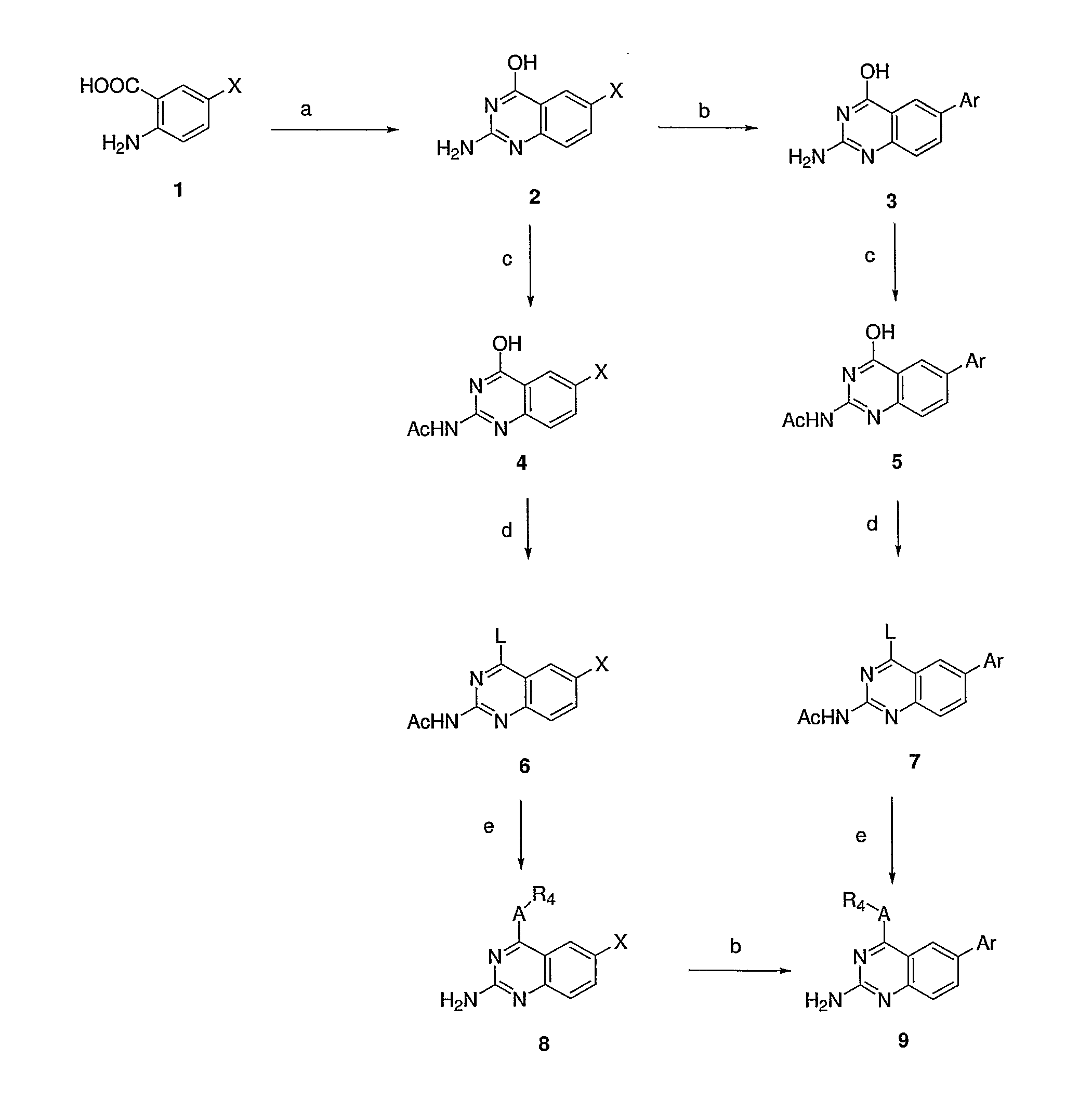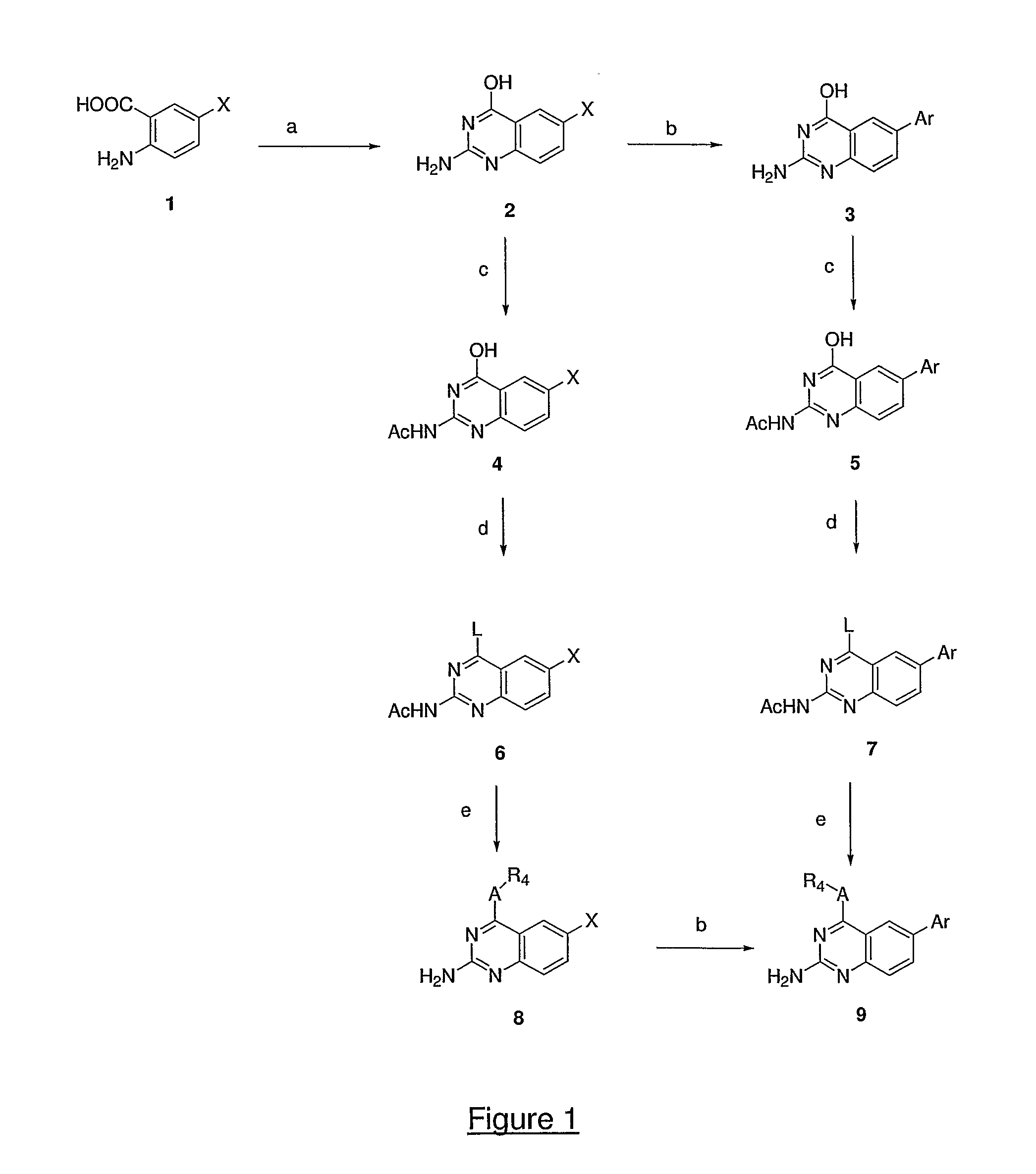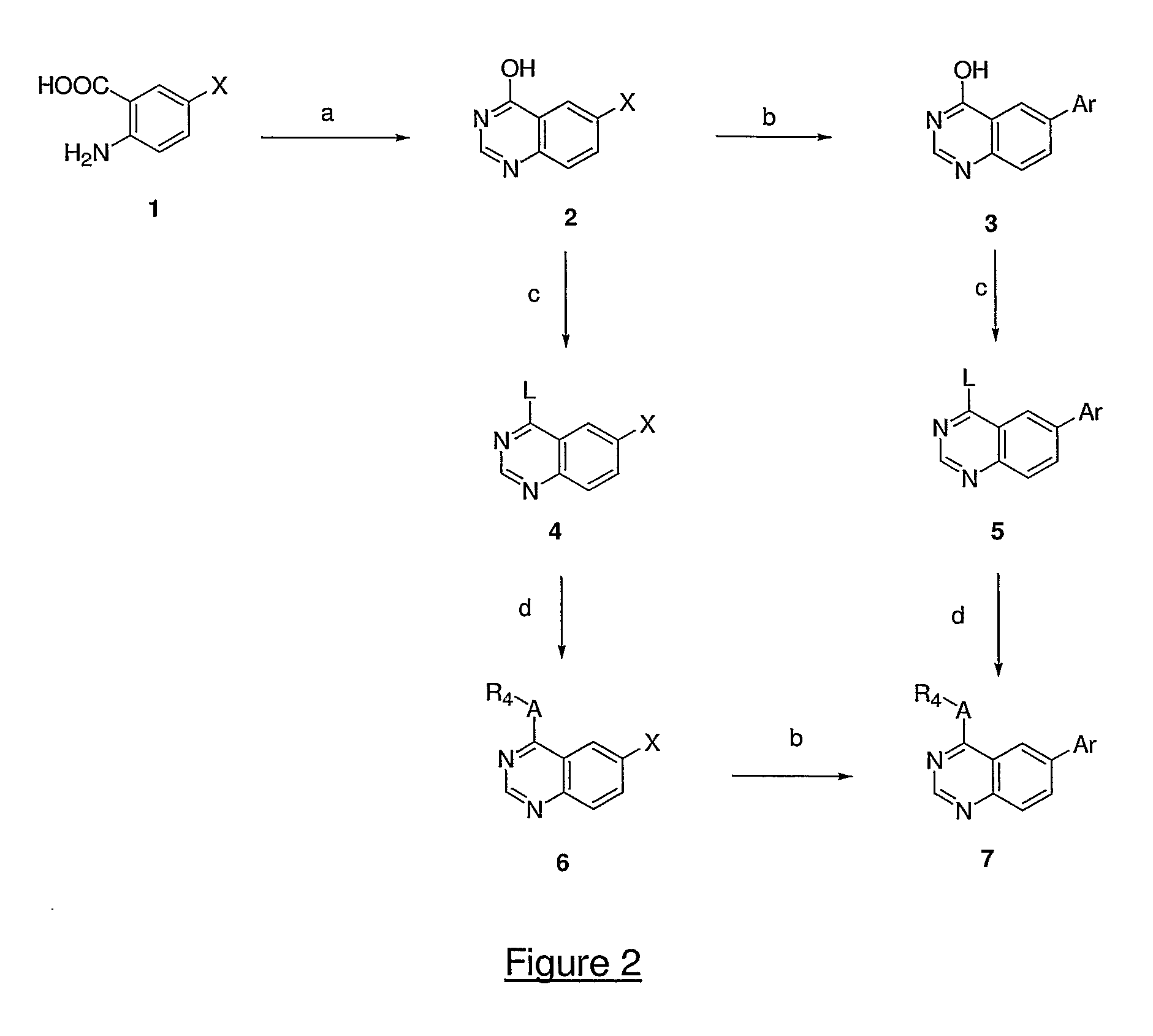4,6-di- and 2,4,6-trisubstituted quinazoline derivatives and pharmaceutical compositions useful for treating viral infections
a technology of quinazoline and derivatives, which is applied in the direction of biocide, organic chemistry, peptide/protein ingredients, etc., can solve the problems of inability to integrate hcv into the host's genome, inability to eradicate infection in most people, and inability to carry hcv. to the host genom
- Summary
- Abstract
- Description
- Claims
- Application Information
AI Technical Summary
Problems solved by technology
Method used
Image
Examples
example 1
Synthesis of 2-amino-4-hydroxy-6-bromo-quinazoline
[0553]
[0554]This compound may be made by any of the following methods:
Method A
[0555]This method has been described by O′Hara et al. in J. Org. Chem. (1991) 56, 776-785. A solution consisting of 2-amino-5-bromobenzoic acid (8.64 g, 40 mmol), cyanamide (2.52 g, 60 mmol) and concentrated hydrochloric acid (3 ml) in absolute ethanol (100 ml) was refluxed for 6 hours. At 1 h intervals, 0.5 ml concentrated hydrochloric acid was added to the reaction mixture. After cooling to room temperature, the precipitate was collected by filtration, washed with ethanol yielding the title compound as a white solid (3.5 g, yield: 36%).
Method B
[0556]A mixture of 2-amino-5-bromobenzoic acid (5.4 g, 25 mmol), chloro-formamidine hydrochloride (5.75 g, 50 mmol), sulfolane (1 ml) and dimethylsulfone (12 g) was heated at 165° C. for 30 minutes. Then, water (100 ml) was added to the reaction mixture and the pH was adjusted to 7-8 by the addition of a 33% aqueous...
example 2
Synthesis of 6-bromo-4-hydroxy-quinazoline
[0557]
[0558]A suspension of 2-amino-5-bromobenzoic acid (5.4 g, 25 mmol) in formamide (40 ml) was heated at 165° C. for 6 hours. After cooling to room temperature, water (100 ml) was added to the reaction mixture. The precipitate was collected by filtration, washed with water and dried over P2O5, yielding the title compound as a white solid (5.3 g, yield: 95%) which was characterized by its mass spectrum as follows: MS (m / z): 225 ([M+H]+, 100).
example 3
Synthesis of 6-chloro-2,4-diamino-quinazoline
[0559]
[0560]A mixture of 2-amino-5-chlorobenzonitrile (1.07 g, 7.0 mmol), chloro-formamidine hydrochloride (1.6 g, 14 mmol), sulfolane (0.5 ml) and dimethylsulfone (3 g) was heated at 165° C. for 30 minutes. Then, water (30 ml) was added to the reaction mixture. The pH was adjusted to 7-8 by the addition of a 33% aqueous ammonia solution in water. The precipitate was collected by filtration, washed with water and dried over P2O5, yielding the title compound as a yellowish solid (1.35 g, yield: 99%) which was characterized by its mass spectrum as follows: MS (m / z): 195 ([M+H]+, 100).
PUM
| Property | Measurement | Unit |
|---|---|---|
| Molar density | aaaaa | aaaaa |
| Time | aaaaa | aaaaa |
| Time | aaaaa | aaaaa |
Abstract
Description
Claims
Application Information
 Login to View More
Login to View More - R&D
- Intellectual Property
- Life Sciences
- Materials
- Tech Scout
- Unparalleled Data Quality
- Higher Quality Content
- 60% Fewer Hallucinations
Browse by: Latest US Patents, China's latest patents, Technical Efficacy Thesaurus, Application Domain, Technology Topic, Popular Technical Reports.
© 2025 PatSnap. All rights reserved.Legal|Privacy policy|Modern Slavery Act Transparency Statement|Sitemap|About US| Contact US: help@patsnap.com



